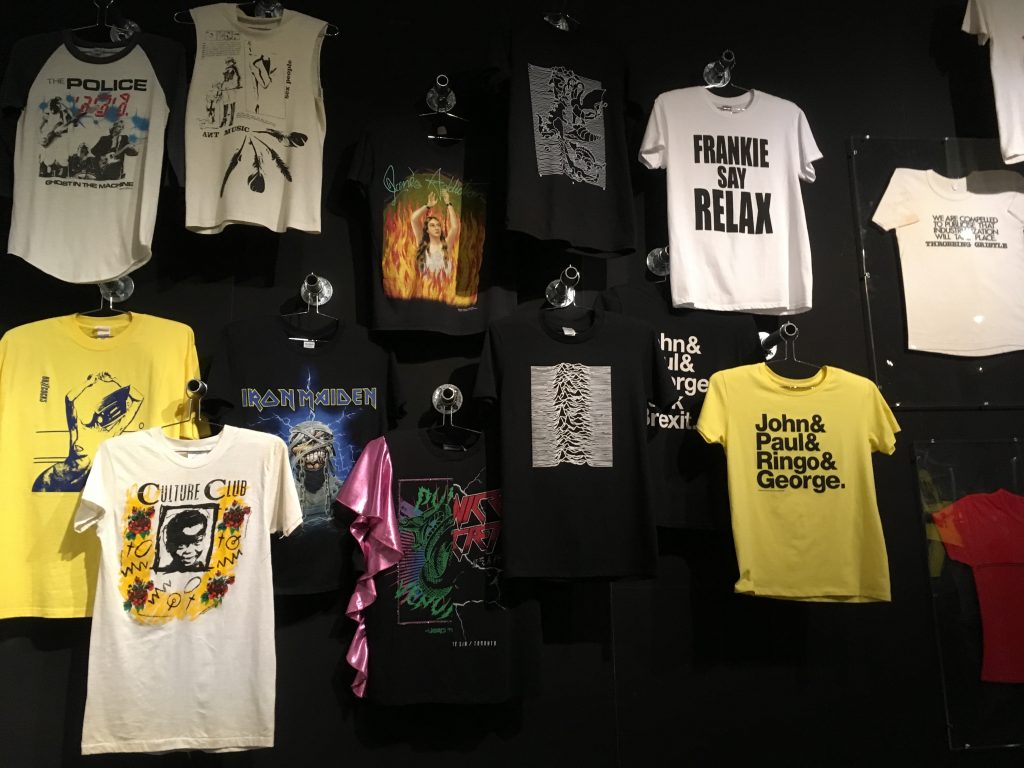
Underrated and oversimplified, the t-shirt is often forgotten as an essential piece to the evolution of fashion. At first glance it is easy to think of the t-shirt as a mass-produced, conventional and ‘lousy’ garment; is it surprising to hear that it has played an important role in influencing social movements?
I was very excited when I saw that the Fashion and Textile museum sought to bring this issue into the fore in its latest exhibition, “T-Shirt: Cult, Culture, Subversion”. I headed over there last weekend to check it out.
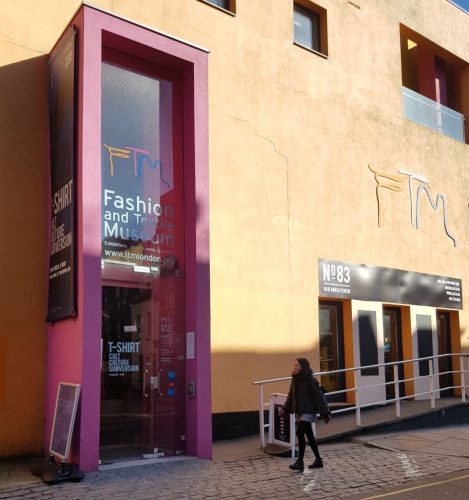
The exhibition highlights the role of t-shirts as a communicative tool for political, social and cultural debates by focusing on events and designers of the late twentieth century to the present day. There are thought-provoking sections on gender and the arts, which serve to stimulate discussions about how this accessible piece can cross boundaries.
Here are a few things that stood out for me:
A history of firsts
• T-shirts were used as far back as AD500, being worn as T-shaped tunics.
• They were primarily designed as vests or underwear for sportsmen in the early 1900s.
• It was only in 1938 that the t-shirt became accessible to the wider public and outerwear, popularised by the American retailer Sears.
• 1948 marks the first year the t-shirt was used in a political campfor the New York governor, Thomas E. Dewey. The slogan read: “Dew-it-with Dewey”.
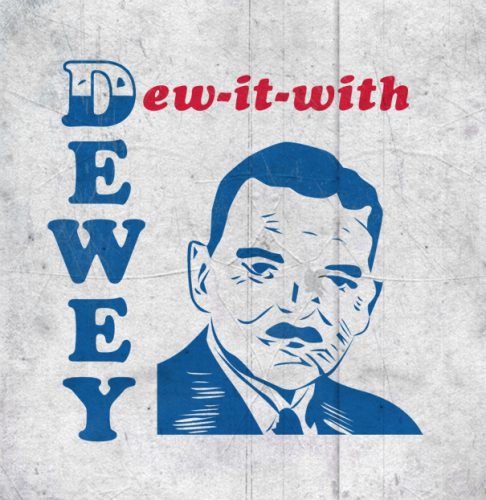
• Fashion designers Vivienne Westwood and Malcolm McLaren brought the t-shirt into mainstream fashion in 1971 through their store “Let it Rock” in London’s Kings Road.
• Throughout the eighties and nineties slogan t-shirt were widely used as a way to protest against social issues such as wearing fur, or to lobby the government.
This is what a feminist looks like
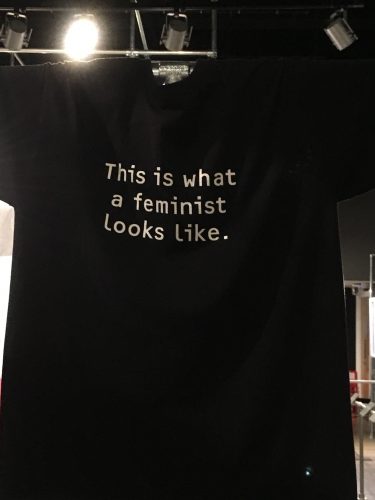
Bold t-shirts were popular during the punk era of the seventies. Provocative images and messages were displayed; distressed t-shirts became increasingly popular. This rough and ‘unfinished’ look was rebellious in that it challenged the ideology of mainstream fashion.
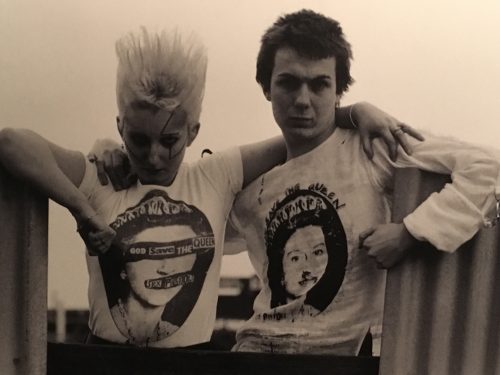
T-shirts soon started to enter the political and social spheres, as slogans were used as a way to draw attention to certain issues. Famously, the English designer Katharine Hamnett greeted Margaret Thatcher at London Fashion Week in 1984 wearing a t-shirt saying: “58% DON’T WANT PERSHING”, referring to the Prime Minister’s decision to station US pershing missiles in Britain.
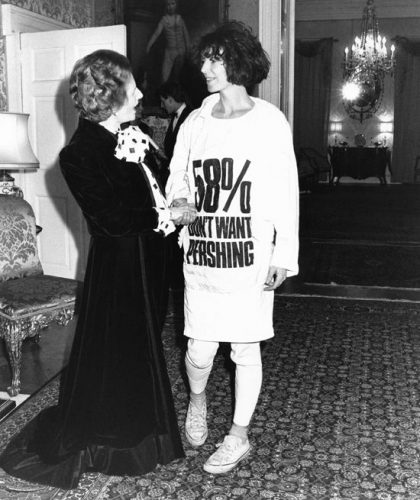
Hamnett also campaigned for environmental issues. She named her 1989 collection “Clean Up or Die” after discovering the effects of pesticide poisoning on cotton in clothing production and lobbied for fair-trade and organic cotton.
Slogan t-shirts are closely linked to LGBTQ rights and feminism. Last year, Maria Grazia Chiuri, the head of Dior, sent models down the catwalk with t-shirts reading, “WE SHOULD ALL BE FEMINISTS”.
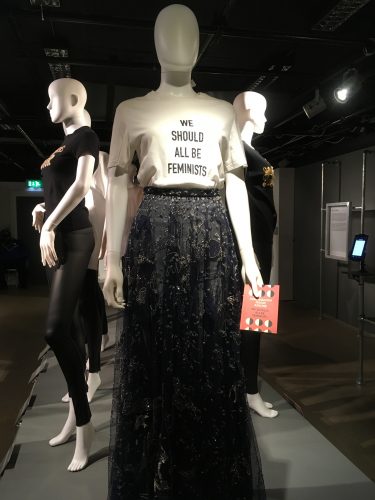
T-shirt engima
I found it interesting that the exhibition also highlighted the ambiguity and paradoxical nature of the t-shirt. While being used to campaign for fair-trade, the manufacturing of the t-shirt itself does not always follow sustainable practices. Nowadays the issue of ethics and fashion has become more widely recognised and many brands have strict policies in place to ensure ethical practices are followed.
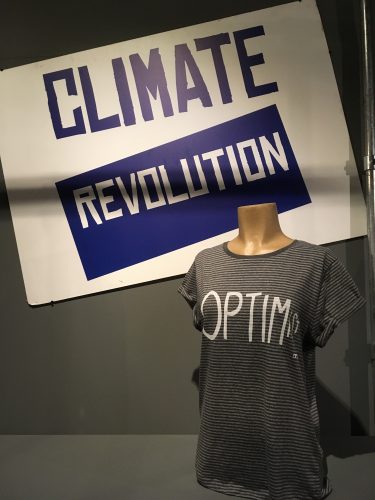
Another interesting paradox is the t-shirt and gender. Inherently the t-shirt is unisex and thus genderless. Everyone can wear a t-shirt. However, the form and shape of the cotton (i.e. tighter t-shirts for women) as well as some printed messages/slogans are clearly directed towards a certain gender, emphasising the barriers it is said to destroy.
By trying to unite people under an LGBTQ slogan, does it not also serve to isolate others or to further emphasise difference?
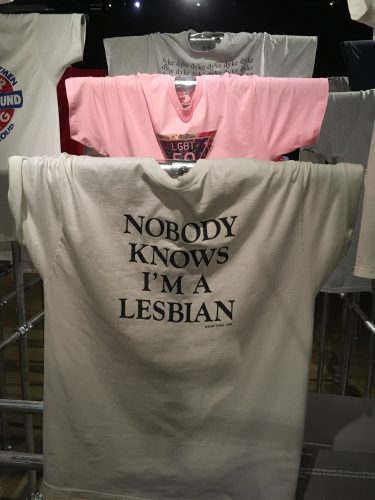
As t-shirts entered the catwalks and were used as canvases for artists, such as Andy Warhol’s Marilyn Monroe designs, the t-shirt also crossed the borders between low and high art. At once an accessible item to all, a limited edition t-shirt with an Andy Warhol design is a collector’s item to a few.
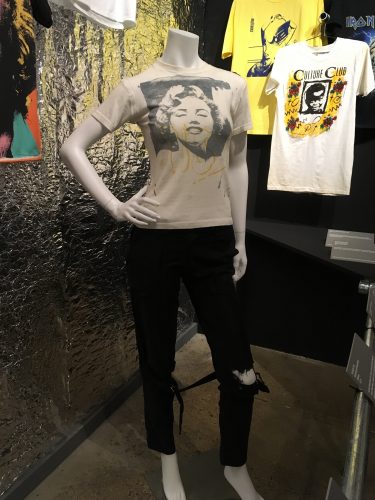
Final words
I really enjoyed this exhibition and it made me think about the t-shirt in a very different light. The ambiguity surrounding the t-shirt is particularly interesting and shows how powerful the t-shirt can be in communicating issues and provoking debates – which to me is its main appeal.
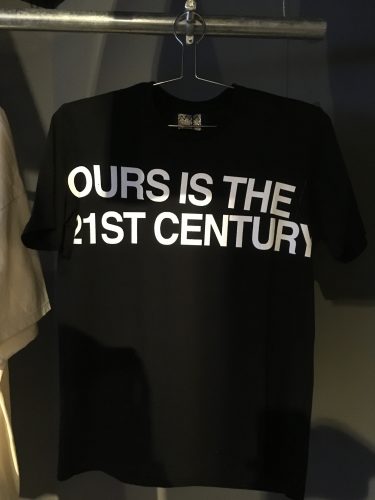
The exhibition is on until 6 May – go check it out and tell me what you think!
